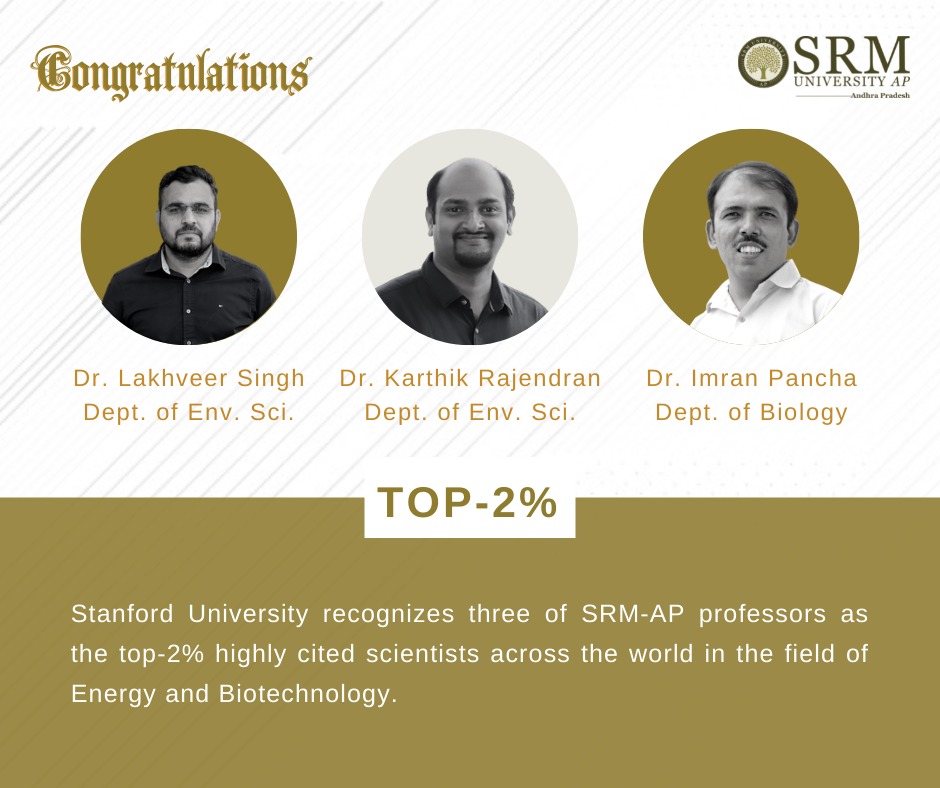Current Happenings ENVS News
- Dr Lakhveer Singh published in Advanced Functional Materials for Engineered Nanoenzymes January 3, 2022
 The Department of Environmental Science is proud to announce that Dr Lakhveer Singh has published his paper titled, “Engineered Nanoenzymes with Multifunctional Properties for Next-Generation Biological and Environmental Applications” in Advanced Functional Materials with an impact factor of 18.50.
The Department of Environmental Science is proud to announce that Dr Lakhveer Singh has published his paper titled, “Engineered Nanoenzymes with Multifunctional Properties for Next-Generation Biological and Environmental Applications” in Advanced Functional Materials with an impact factor of 18.50.About the Paper:
Enzyme mimicking studies took on a new aspect as it turns out that inorganic nanomaterials could have intrinsic enzyme-like activities. The word nanozyme (nanoenzyme) was first coined to describe the ribonuclease-like activity of ligand functionalised gold nanoparticles in 2004. Since then, various research has been continued on nanomaterials with enzyme-like activity. Thus, nanoenzyme has come to describe nanomaterials with enzyme-like activity.
Abstract:
As a powerful tool, nanoenzyme electrocatalyst broadens the ways to explore bioinspired solutions to the world’s energy and environmental concerns. Efforts to fashion novel nanoenzymes or engineering nanoenzymes for effective electrode functionalisation is generating innovative, viable catalysts with high catalytic activity, low cost, high stability and versatility, and ease of production. High chemo-selectivity and broad functional group tolerance of nanoenzyme with an intrinsic enzyme-like activity make them an excellent environmental tool. The catalytic activities and kinetics of nanoenzymes that benefit the development of nanoenzyme-based energy and environmental technologies by effectual electrode functionalisation are discussed in this article. Further, deep insight on recent developments in the state-of-art of nanoenzymes either in terms of electrocatalytic redox reactions (viz. oxygen evolution reaction, oxygen reduction reaction, nitrogen reduction reaction and hydrogen evolution reaction) or environmental remediation/treatment of wastewater/or monitoring of a variety of pollutants. The complex interdependence of the physicochemical properties and catalytic characteristics of nanoenzymes are discussed, along with the exciting opportunities presented by nanomaterial-based core structures adorned with nanoparticle active-sites shell for enhanced catalytic processes. Thus, such modular architecture with multi-enzymatic potential introduces an immense scope of making its economical scale-up for multielectron-fuel or product recovery and multi-pollutant or pesticide remediation as reality.
Collaboration:
The assignment on “Engineered Nanoenzyme” was completed with the Department of Chemical and Biomolecular Engineering, Korea Advanced Institute of Science and Technology (KAIST), 291 Daehak-Ro, Yuseong-Gu, Daejeon 34141, the Republic of Korea, along with other universities.
Social and Industrial Implications:
Trends of nanoenzyme are replacing conventional enzymes, particularly in a microbial bioelectrofuel biosystem, as cheap and efficient electrocatalysts. In this account, various strategies from altering scaffold to point alteration and iterative targeted tailoring have been applied to improve the enzyme-like activity and selectivity of the artificial enzymes.
Future Plans:
Strategies need to be devised to increase the mass loading of both homogenous and heterogeneous nanoenzyme for higher current density. Though, area of nanoenzyme is in its growing stage, engineering nanoenzyme with improved catalytic performance comparable to or even higher than that of the natural enzyme is one of the most concerning issues at this moment. Besides, the future breakthrough in nanoenzyme technology will lead to the development of novel catalysts with wider applications in multiple disciplines.
- World’s top 2% scientists by Stanford University include faculty from SRM University-AP October 26, 2021
 Dr Karthik Rajendran, and Dr Lakhveer Singh from the Department of Environmental Science and Dr Imran Pancha from the Department of Biological Sciences of SRM University-AP are enlisted on the global list of the top 2% of scientists, the data compiled by Stanford University.
Dr Karthik Rajendran, and Dr Lakhveer Singh from the Department of Environmental Science and Dr Imran Pancha from the Department of Biological Sciences of SRM University-AP are enlisted on the global list of the top 2% of scientists, the data compiled by Stanford University.Stanford University has identified Dr Imran Pancha as one of the 91 scientists who has excelled in research in the fields of biotechnology among all the universities in India. Dr Imran Pancha was recognised as one of the top 2% scientists in the world in the year 2020 also. Stanford University recognized 178 scientists who excelled in research in the field of energy, which includes Dr Karthik Rajendran and Dr Lakhveer Singh among the top 2 per cent of scientists. The quality of research work, its societal impact, number of publications, citations, are taken into consideration for this recognition.
University Vice-Chancellor Prof V S Rao and Pro-Vice-Chancellor Prof D Narayana Rao presented Certificates of Recognition to the three professors at a congratulatory function held at the university on Friday. “This is an admirable achievement that young faculty from a nascent University appear in the top 2% scientists of the world,” said Prof D Narayana Rao. Prof V S Rao Narayana Rao appreciated their talent and efforts. Prof Narayana Rao assured them that the university would provide the necessary comprehensive support for carrying out research in front-line and emerging areas. Prof Narayana Rao further said that he is very confident that many more faculty members of SRM University – AP, will receive such global recognition in the years to come.
Continue reading →

